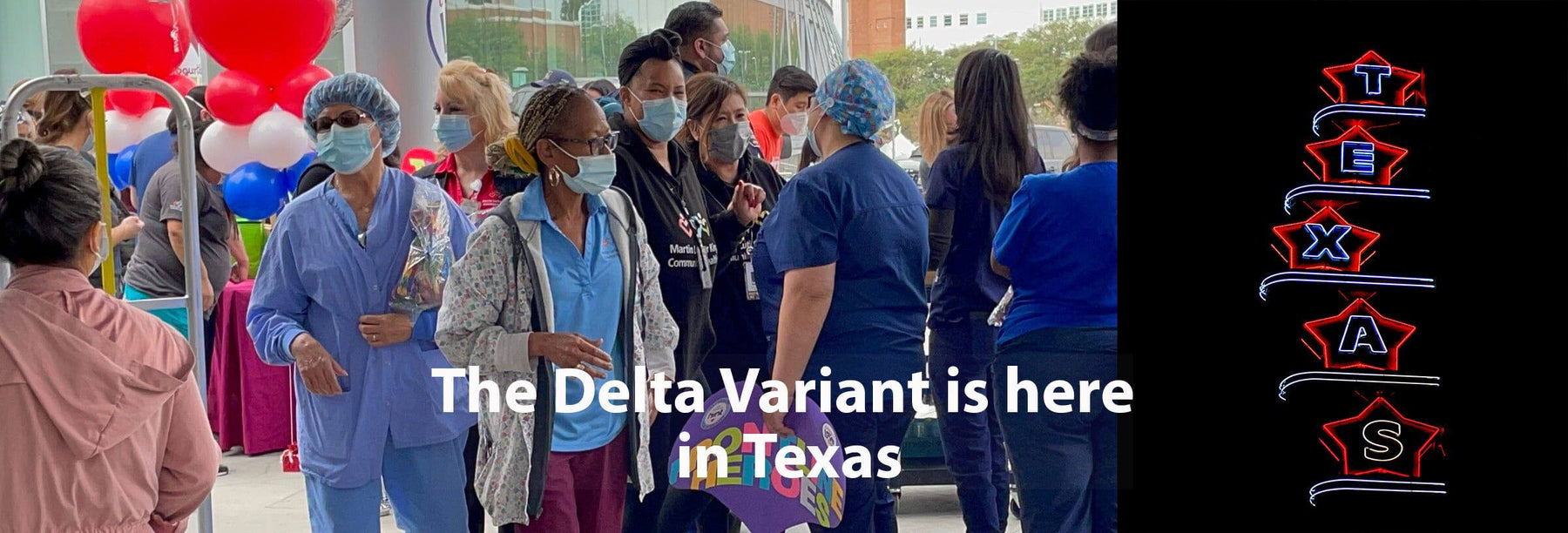
It's time to mask up: The Delta Variant is here in Texas
COVID-19 delta variant, which is highly contagious, has been causing a national outbreak in Texas and nationwide - mostly affecting those not yet vaccinated. Several variations of COVID-19 have emerged since the original, though health experts say that the delta variant has been the most problematic. Additionally, research shows it can lead to higher rates of hospitalization for those already infected. The infection rate with the COVID-19 Delta variant remains so high that despite months of hard work and continuous efforts to stop the spread of the outbreak by mass vaccinations throughout the spring and winter, Stage 5 has seen the virus re-appear in Austin.
Darlene Bhavnani is an infectious disease epidemiologist and associate professor of population health at the University of Texas Dell Medical School. She says that they didn't see it coming in spite of the fact that it was inevitable. The first week of July saw a rapid increase in new hospitalizations as a result. 510 people were hospitalized for COVID-19 in the first week of July alone. Of those, 184 were in the intensive care unit and 102 on ventilators. Plus, the fact that one in four cases in the U.S. now is the Delta variant, which is more transmissible, gives some insight into what Texas residents are yet to experience.
It should be noted that in Texas, 49.7% of the eligible population (age 12 and over) have been fully vaccinated, and 57.8% have had at least one dose, according to Texas Department of State Health Services data. The U.S. population up to age 12 vaccinates 64% of the population, and 55% of the population over age 12 is fully vaccinated. Yet the current 7-day average of Coronavirus cases in Texas stands at 14,000+ signaling the highest level of risk for the delta strain. This data upfront tells us that, firstly, those who aren't vaccinated are more at risk, primarily kids, for which the vaccines are not yet available, with best-case scenarios predicting their availability in late September or early October. Secondly, if children are at the highest risk, then we need to think about the extent to which it is safe to send our children back to school.
So, with COVID-19 surging once again, masking optional at school, and vaccines not available for children under 12, these children run the risk of passing the virus along to other children, which could significantly increase this already escalating rate of infection. The horrific part of how this virus works is that people could be infectious before even experiencing the symptoms of being attacked by the virus. And sometimes, they may not even feel sick, yet they are contagious. Sadly, before even realizing that you have been affected, you are likely to come in contact with several people, putting them at risk as well. As a result, parents are scrambling to find a safer option for their kids, and this scrambling is being replicated across the state by school administrators, teachers, and parents. People believe that for the second consecutive year, schools must focus on keeping both their staff and children safe and on ensuring that they can provide the best possible education during a pandemic that has killed more than 50,000 Texans.
Now, the question is: In light of all of this, how should parents and students prepare for this year, which has already begun with uncertainty?
It turns out that there are some relevant answers to this question.
Keep up with changes in school policies.
How does your school and district communicate with you? Ask your school about how you can communicate with them more effectively and know about the updated notices or latest policies.
For more information on COVID-19 updates, visit your school's or district's website. Most districts have a whole tab that outlines the current COVID-19 protocols and what students' learning options are. These outlines let you know about things like where your child is required to wear a mask, what is the school's policy about carrying a hand sanitizer, or the frequency of washing hands, the social distancing norms, etc.
You should also check emails and websites often because procedures are rapidly changing and vary from school to school.
In most school districts, temperatures will not be checked at the door, but parents are asked to check their children's temperatures before dropping them off or putting them on a bus each morning. Also, some of the physical distance that was possible last year because of limited on-site enrollment will not be possible this year. Most districts are continuing hand sanitizing stations, but regardless, one should not let go of the habit of keeping a sanitizer to themselves. Similarly, whether the school mandates the masks or not, masks aren't to be abandoned just yet.
Vaccinated or not, wear a mask

As it is still unclear as to when the vaccine for children will be available, the one and only option out there to protect our children from this deadly virus when they are out in their schools is a mask. However, this situation has been complicated by the fact that Gov. Greg Abbott has banned the use of masks in schools and is not allowing funding for remote learning. However, worried parents across Texas found some hope as several big-city school districts, including Austin, Dallas, Houston, Fort Worth, San Antonio, and other Bexar County counties, decided to defy Abbott and require masks to be worn in class.
However, masking up children does come with its own challenges. Masks are now a familiar sight to kids. However, some children, especially toddlers, may be uneasy about it. When a mask covers part of a person's face, kids can't see the smiling face or familiar look that usually eases their tension. If a child cannot see a person's whole face, then he or she will not feel safe. In such a situation, it is natural for them to feel scared.
Parents and teachers can help their children by explaining why they might have to wear masks at school, daycare, and all other public places. Even very young kids can learn that a seemingly scary adventure is life-saving after all.

Leave a comment